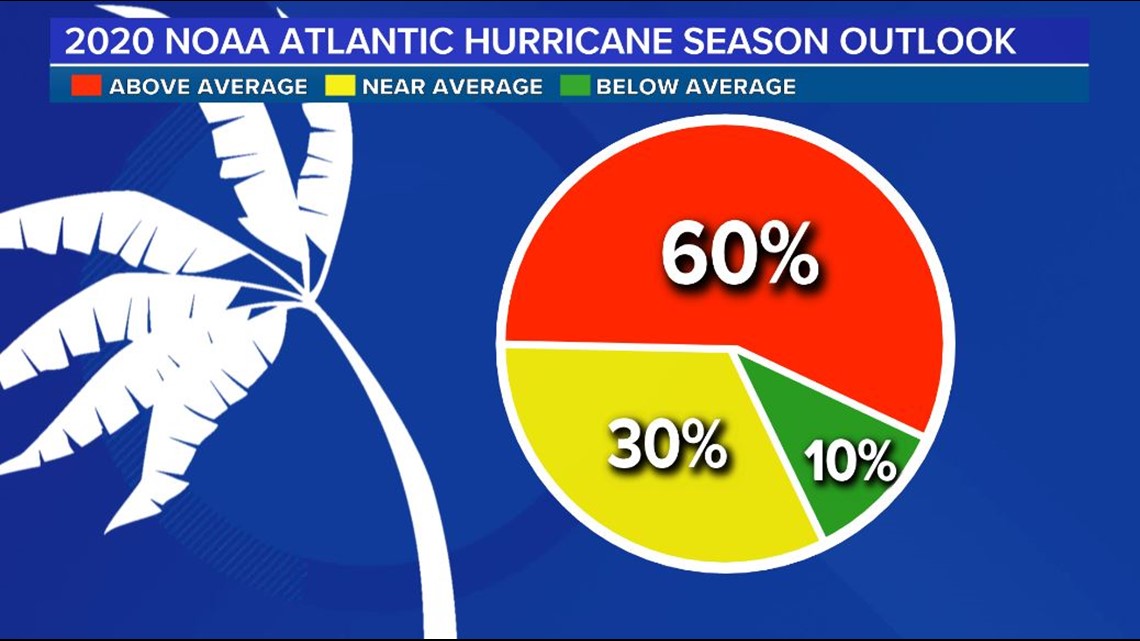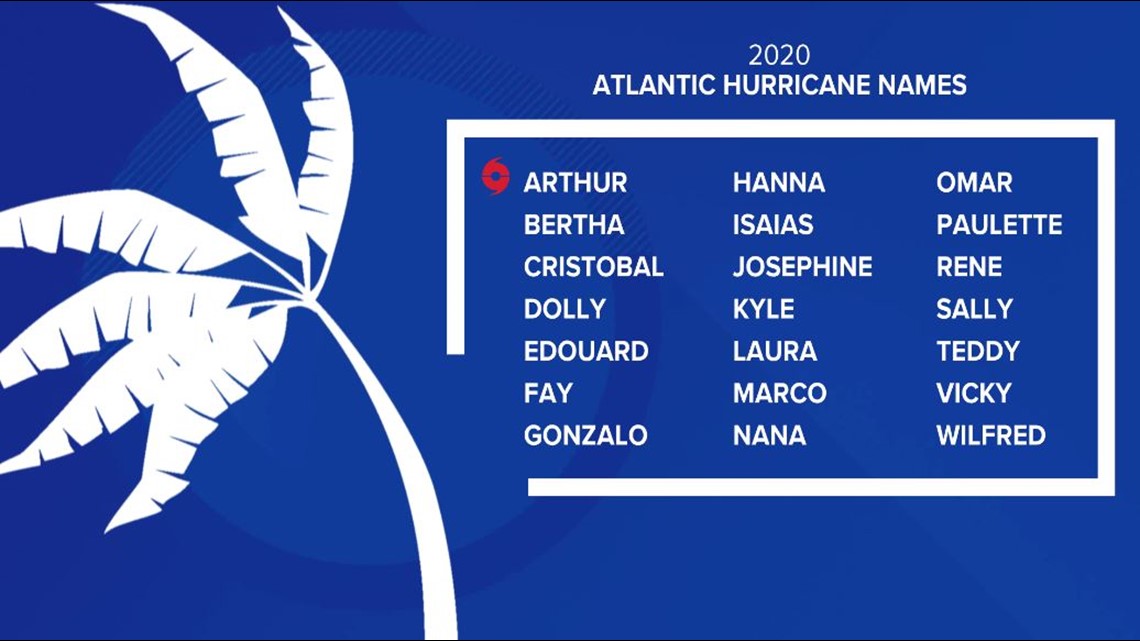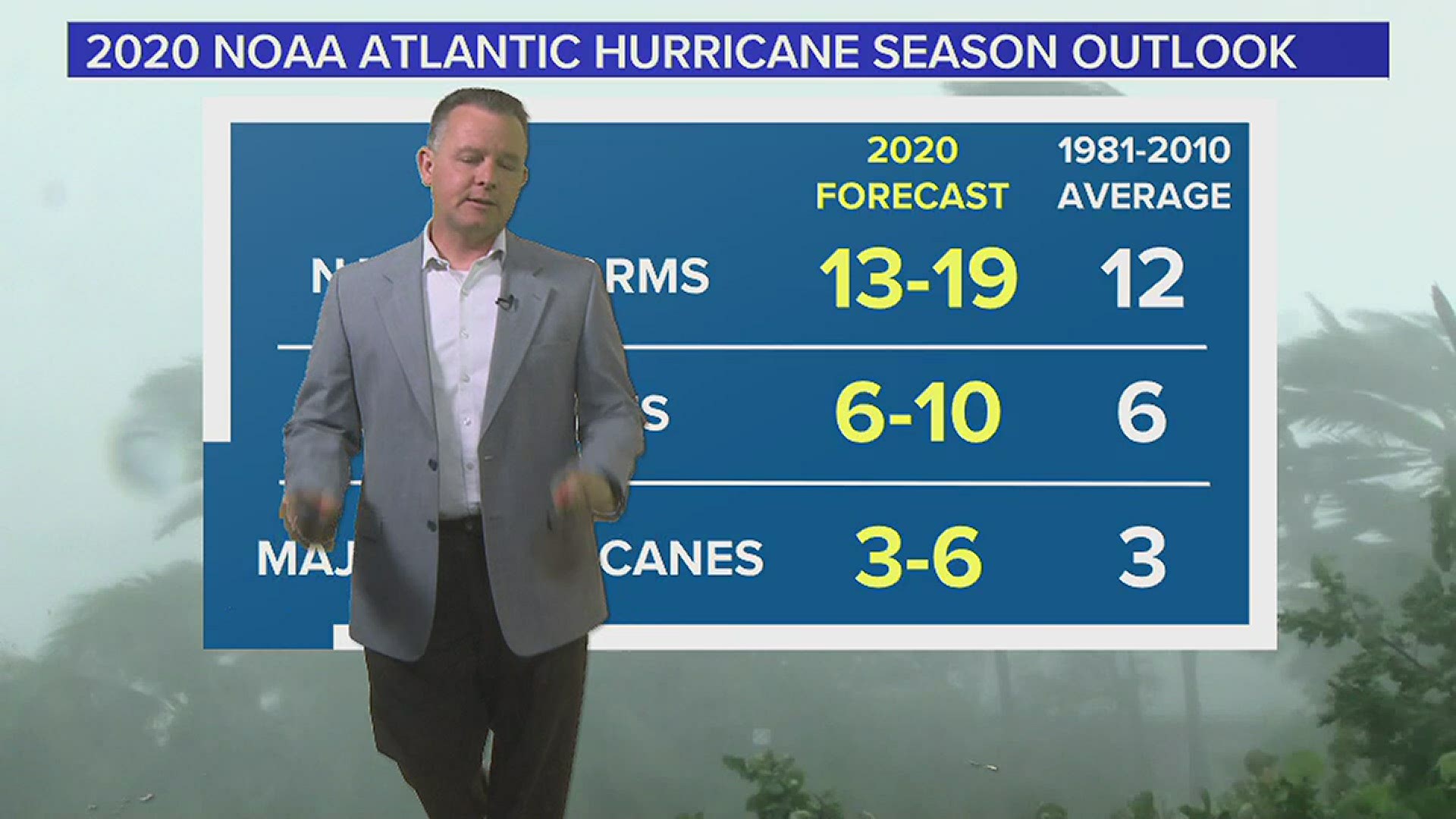COLUMBIA, S.C. — The National Oceanic and Atmospheric Administration is expecting a busy hurricane season with 13 to 19 named storms.
An above-normal hurricane season is expected according to NOAA. The forecast, issued Thursday morning, predicts a 60% chance of an above-normal season, a 30% chance of a near-normal season and a 10% chance of a below-normal hurricane season.
According to Neil Jacobs, Ph.D., acting NOAA administrator, “NOAA’s analysis of current and seasonal atmospheric conditions reveals a recipe for an active Atlantic hurricane season this year.”
NOAA expects 13 to 19 named storms, of which 6 to 10 could become hurricanes, including 3 to 6 major hurricanes.
A major hurricane is a category 3, 4 or 5. These storms have winds of at least 111 mph.
On average, the Atlantic hurricane season produces 12 named storms, 6 becoming hurricanes, including 3 major hurricanes.
According to NOAA, the combination of several climate factors is driving the strong chance for above-normal activity this year.


El Nino Southern Oscillation (ENSO) conditions are expected to either remain neutral or to trend toward La Nina, meaning there will not be an El Nino present to suppress hurricane activity.
Warmer-than-average sea surface temperatures in the tropical Atlantic Ocean and Caribbean Sea, coupled with reduced vertical wind shear, weaker tropical Atlantic trade winds, and an enhanced west African monsoon all increase the likelihood for an above-normal Atlantic hurricane season.
Similar conditions have been producing more active seasons since the current high-activity era began in 1995, according to NOAA.
Even though this season is predicted to be a busy one, NOAA’s outlook is for overall seasonal activity and is not a landfall forecast.
An update to the 2020 Atlantic seasonal outlook will be issued in August prior to the historical peak of the season.


We did get an early start on hurricane season. Tropical Storm Arthur grazed the North Carolina coast on Monday, but it did not make an official landfall.

